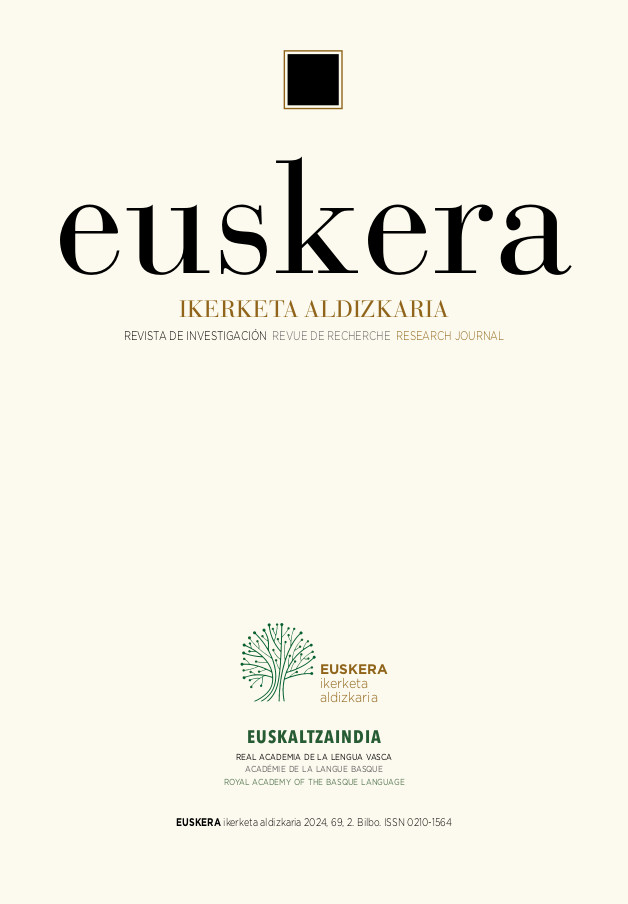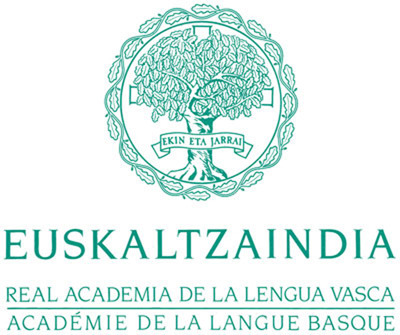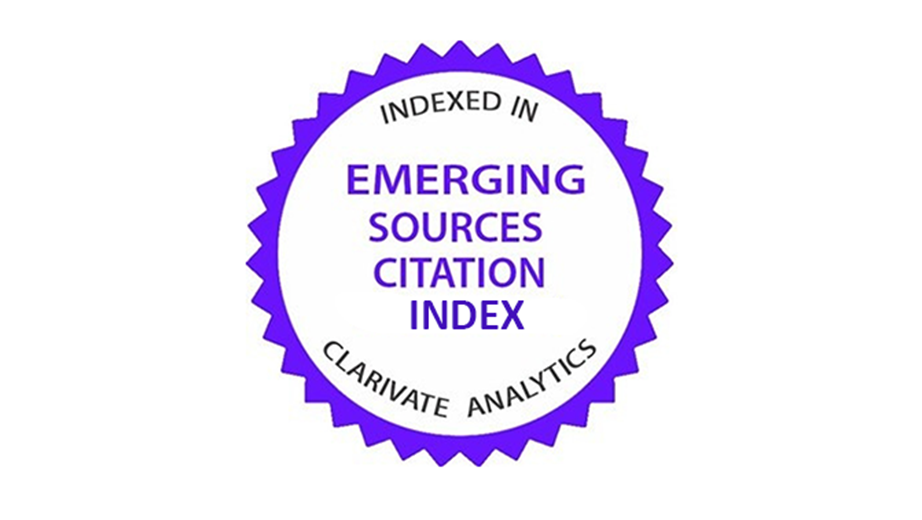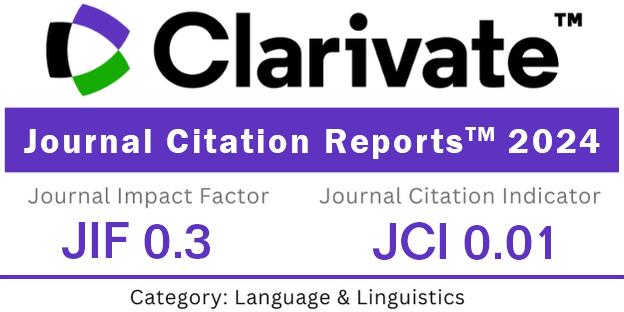-KAdun adberbioez haratago: apurKA-apurKA baina beti aurreraKA
DOI:
https://doi.org/10.59866/eia.v69i2.284Gako-hitzak:
-KA atzizkia, plurala, erreferentzia metagarria, adberbioak, morfologiaLaburpena
Lan honetan, -KA atzizkiak zenbait gramatika-kategoriatako osagaiekin elkartzean sorrarazten dituen interpretazioak aztertu ditugu, hots, -KAdun kuantifikatzaileetan (dozenaka), aditzetan (saltoka), adposizioetan (etxeraka) eta modifikatzaileetan (multzoka) dituena, eta testuinguru horietan guztietan duen erabilerari, adberbioa izatetik harago doan azalpena eman diogu, kasu guztiok ezaugarritzeko gai den azalpen bateratua. Proposatu dugu, morfema horren zeregina [+ plurala] tasuna gaineratzea dela, eta hala, bere egitekoa ez dela, euskarazko hainbat gramatikatan adierazi den bezala, beste kategoria batzuetatik eratorritako adberbioak sortzea, baizik eta, [+ plurala] tasuna gaineratuz, erreferentzia metagarria duten osagaiak sorraraztea.
Deskargak
Erreferentziak
Alexiadou, Artemis (2011). «Plural mass nouns and the morpho-syntax of number», in Proceedings of the 28th West Coast Conference onFormal Linguistics. Somerville, MA: Cascadilla Proceedings Project: 33-41.
Artiagagoitia, Xabier (2002). «The functional structure of Basque noun phrase», in Erramu Boneta: Festschrift for Rudolf P.G. De Rijk, ASJUren Gehigarriak bilduma, 44. zenbakia. Vitoria-Gasteiz: UPV/EHU: 73-90.
Artiagagoitia, Xabier (2004). «Izen-sintagmaren berziklatzea: IS-tik izenaren inguruko fun-tzio-buruetara», in Euskal gramatika xxi mendearen atarian. Arazo zaharrak, azterbi-de berriak. Vitoria-Gasteiz: UPV/EHU eta Arabako Foru Aldundia: 11-38.
Artiagagoitia, Xabier (2006). «Basque adjectives and the functional structure of the noun phrase», ASJU 40 (1), 2006: 107-132. Eskuragarri: [DOI: https://doi.org/10.1387/asju.4376].
Artiagagoitia, Xabier (2012). «The DP Hypothesis in the grammar of Basque», in Noun Phra-ses and nominalization in Basque. Syntax and semantics. Amsterdam, Philadelphia: John Benjamins: 22-77. Eskuragarri: [DOI: https://doi.org/10.1075/la.187]. DOI: https://doi.org/10.1075/la.187.04art
Barandiaran, Alberto (2005). Mundu txikia. Zarautz: Susa.
Berro, Ane (2015a). «From adpositions to events: the case of location predica-tes in Basque», in Approaches to ComplexPredicates. Leiden, Boston: Brill: 20-45. Eskuragarri: [DOI: https://doi.org/10.1163/9789004307094_003]. DOI: https://doi.org/10.1163/9789004307094_003
Berro, Ane (2015b). Breaking verbs. From event structure to syntactic categories in Basque. [Doktorego-tesia, UPV/EHU eta Université Bordeaux Montaigne].
Bilbao, Kristina (2022). «Instrumentalaren eta inesiboaren alternantzia denbo-razko modifikatzaileetan: instrumentala (-z) [v inesiboa (-n)]», in Euskara Baria-zioan / Basque in Variation. Lehen urratsak / First steps. UPV/EHUko Argitalpen Zerbitzua. (3. argitalpena). Eskuragarri: [https://basqueandbeyond.ehu.eus/biv/ o=chapters&id=5&e=34&h=eu].
Cabredo Hofherr, Patricia (2010). Verbal plurality and event plurality. DGFS-CNRS Summer School on Linguistic Typology, Leipzig, 15/08-03/09. (Hitzaldi--oharrak).
Cano, Harkaitz (2000). Piano gainean gosaltzen. Donostia: Erein.CoMrie, Bernard (1976). Aspect. An Introduction to the study of verbal aspect and related problems. Cambridge: CUP.
Cowell, Mark W. (1964). A Reference Grammar of Syrian Arabic. Washington D.C.: Georgetown University Press.
Cusi C, David (1981). Verbal plurality and aspect. [Doktorego-tesia, Stanford University].
Del Fitto, Denis (2006). «Adverb classes and adverb placement», in The Black-well companion to syntax. Oxford: Blackwell Publishing: 83-120. Eskuragarri: [DOI: https:/ doi.org/10.1002/9780470996591.ch4]. DOI: https://doi.org/10.1002/9780470996591.ch4
Den Dikken, Marcel (2010). «On the functional structure of locatives and di-rectional PPs», in Mapping spatial PPs. The Cartography of Syntactic Structures, 6. liburukia. New York: OUP: 74-126. Eskuragarri: [DOI: https://doi.org/10.1093/acprof:oso/9780195393675.003.0003]. DOI: https://doi.org/10.1093/acprof:oso/9780195393675.003.0003
Dowty, David (1979). Word meaning and Montague grammar. Dordrecht: Kluwer. Eskuragarri: [DOI: https://doi.org/10.1007/978-94-009-9473-7]. DOI: https://doi.org/10.1007/978-94-009-9473-7
Dressler, Wolfgang (1968). Studien zur verbalen Pluralität. Viena: Herman Böhlaus.
Euskaltzaindia (1985 [1991]). Euskal Gramatika. Lehen Urratsak (EGLU-I). Bilbo: Euskaltzaindia. (2021). Euskararen gramatika. Bilbo: Euskaltzaindia.
Etxeberri, Ramuntxo (2004). Skyroom. Donostia: Elkarlanean.
Etxeberria, Jürgen (2021). «Euskal leku adposizioak: buru sintaktikoen egitu-raketa hierarkikoa», Lapurdum: Euskal Ikerketen Aldizkaria 22, 2021: 1-31. Eskuragarri: [DOI: https:/doi.org/10.4000/lapurdum.3960]. DOI: https://doi.org/10.4000/lapurdum.3960
Etxeberria, Jürgen (2023). «Euskarazko adposizioetan barna, aldakortasuna sailkatzeko proposamen berri bat», in V. IkerGazte. Nazioarteko ikerketa euskaraz. Kongresuko artikulu-bilduma. Gizarte Zientziak eta Artea. Bilbo: UEUren Argitalpen Zerbitzua: 121-128.
Etxeberria, Urtzi (2005). Quantification and domain restriction in Basque. [Doktorego-tesia, UPV/EHU].
Etxeberria, Urtzi (2012). «Quantification in Basque», in Handbook of Quantifiers in Natural Languages. Amsterdam: Springer: 83-164. Eskuragarri: [DOI: https:/doi.org/10.1007/978-94-007-2681-9_3]. DOI: https://doi.org/10.1007/978-94-007-2681-9_3
Etxeberria, Urtzi (2012). «Number agreement in Basque: counting vs. measuring», in NounPhrase and Nominalizations in Basque. Amsterdam, Philadelphia: John Benjamins: 149-178. https://doi.org/10.1075/la.187.07etx DOI: https://doi.org/10.1075/la.187.07etx
Etxeberria, Urtzi eta Etxepare, Ricardo (2008). «Izen eta gertakarien gaineko kuantifikazioa», in Gramatika jaietan. Patxi Goenagaren omenez, ASJUren Gehigarriak bilduma, 51. zenbakia. Vitoria-Gasteiz: UPV/EHU: 259-286. Eskuragarri: [DOI: https://doi.org/10.1387/asju.9789].
Etxepare, Ricardo (2003). «Valency and Argument Structure in the Verb», in A grammar of Basque. Berlin: De Gruyter Mouton: 369-465. Eskuragarri: [DOI: https://doi.org/10.1515/9783110895285.363]. DOI: https://doi.org/10.1515/9783110895285.363
Etxepare, Ricardo eta Oihartzabal, Beñat (2012). «Datives and Adpositions in North-Eastern Basque», in Variation in Datives. AMicro-Comparative Perspective. Oxford: OUP: 50-95. Eskuragarri: [DOI: https://doi.org/10.1093/acprof:oso/9780199937363.003.0003]. DOI: https://doi.org/10.1093/acprof:oso/9780199937363.003.0003
Fernández-Altonaga, Cecilia (2022a). Searching for adverbs. A look into the nature of adverbial modifiers from Basque manner adverbials. [Master Amaierako Lana, UPV/EHU]. Fernández-Altonaga, Cecilia (2022b). «Adberbioak euskaraz: hitz mota bakarra ala gehiago?», Uztaro: Giza eta Gizarte-Zientzien Aldizkaria 123, 2022: 81-107. Eskuragarri: [DOI: https://dx.doi.org/10.26876/uztaro.123.2022.5]. DOI: https://doi.org/10.26876/uztaro.123.2022.5
Garrett, Andrew (2001). The origin of the Latin frequentative. Berkeley: Univer-sity of California. (Eskuizkribua).
Goenaga, Patxi (2022). Euskal gramatika. Egiturak eta osagaiak. Bilbo: UPV/EHU-ko Argitalpen Zerbitzua. Eskuragarri: [https:/egeo.ehu.eus/]. DOI: https://doi.org/10.1387/9788413193618.8
Halle, Morris eta Marantz, Alex (1993). «Distributed morphology and the pieces of inflection», in The View From Building 20. Essays in linguistics in honor of Sylvan Bromberger. Cambridge, MA: MIT Press: 111-176.
Halle, Morris eta Marantz, Alex (1994). «Some key features of distributed morphology», in Papers on phonology and morphology. Mit Working Papers Linguistics: MITWPL 21. Cambridge, MA: MITWPL: 275-288.
Harley, Heidi eta Noyer, Rolf (1999). «State-of-the-art-article: distributed morphology», The Second Glot International State-of-the-Article Book 4 (4), 1999: 3-9.
Hay, Jennifer, Kennedy, Christopher eta Levin, Beth (1999). «Scalar structure underlies telicity in degree achievements», in Proceedings of SALT 9, 1999: 127-144. Eskuragarri: [DOI: https://doi.org/10.3765/salt.v9i0.2833]. DOI: https://doi.org/10.3765/salt.v9i0.2833
Hualde, Jose Ignacio (2003). «Adverbs», in A grammar of Basque. Berlin: De Gruyter Mouton: 196-201. Eskuragarri: [DOI: https://doi.org/10.1515/9783110895285.190]. DOI: https://doi.org/10.1515/9783110895285.190
Hualde, Jose Ignacio eta Ortiz de Urbina, Jon (2003). A grammar of Basque. Berlin: De Gruyter Mouton. Eskuragarri: [DOI: https:/ doi.org/10.1515/9783110895285.328]. DOI: https://doi.org/10.1515/9783110895285
Iordachioaia, Gianina Nicoleta eta Soare, Elena (2015). «Pluractionality with lexically cumulative verbs: the supine nominalization in Romanian», Natural LanguageSemantics 23, 2015: 307-352. Eskuragarri: [DOI: https://doi.org/10.1007/s11050-015-9117-9]. DOI: https://doi.org/10.1007/s11050-015-9117-9
Jacobson, Steven A. (1984). Yup'ik Eskimo Dictionary. Fairbanks: Alaska Native Language Center.
Kennedy, Christopher eta McNally, Louise (1999). «From Event Structure to Scale Structure: Degree Modification in Deverbal Adjectives», Proceedings of SALT 9, 1999: 163-180. Eskuragarri: [DOI: https://doi.org/10.3765/salt.v9i0.2820]. DOI: https://doi.org/10.3765/salt.v9i0.2820
Kennedy, Christopher eta McNally, Louise (2005). «Scale Structure, Degree Modification, and the Semantics of Gradable Predicates», Language 81, 2005: 345-381. Eskuragarri: [DOI: https://doi.org/10.1353/lan.2005.0071]. DOI: https://doi.org/10.1353/lan.2005.0071
Kimball, Geoffrey D. (1991). Koasati Grammar. Lincoln, London: University of Nebraska Press-American Indian Studies Research Institute.kooPMAn, Hilda (2000). «Prepositions, postpositions, circumpositions and par-ticles», in The syntax of specifiers and heads. London: Routledge: 204-260.
Krifka, Manfred (1989). «Nominal reference, temporal constitution and quantification in event semantics», in Semantics and Contextual Expressions. Dordrecht: Foris: 75-115. Eskuragarri: [DOI: https://doi.org/10.1515/9783110877335-005]. DOI: https://doi.org/10.1515/9783110877335-005
Krifka, Manfred (1989) (1998). «The origins of telicity», in Events and Grammar. Dordrecht: Kluwer: 197-235. Eskuragarri: [DOI: https://doi.org/10.1007/978-94-011-3969-4_9]. DOI: https://doi.org/10.1007/978-94-011-3969-4_9
Laca, Brenda (2006). «Indefinites, quantifiers and pluractionals: what scope effects tell us about event pluralities», in Nondefinitenessand plurality. Amsterdam: John Benjamins: 191-217. Eskuragarri: [DOI: https://doi.org/10.1075/la.95.10lac]. DOI: https://doi.org/10.1075/la.95.10lac
Lasershon, Peter (1995). Plurality, Conjunction and Events. Dordrecht: Kluwer. Eskuragarri: [DOI: https://doi.org/10.1007/978-94-015-8581-1]. DOI: https://doi.org/10.1007/978-94-015-8581-1
Maratz, Alec (1997). «No escape from syntax: don't try morphological analysis in the privacy of your own lexicon», University of Pennsylvania Working Papers in Linguistics 4 (2), 1997: 201-225.
Matushansky, Ora eta Maratz, Alex (2013). Distributed morphology today. Morphemes for Morris Halle. Cambridge, MA: MIT Press. https://doi.org/10.7551mitpress/9780262019675.001.0001 DOI: https://doi.org/10.7551/mitpress/9780262019675.001.0001
Ortiz de Urbina, Jon (2003). «Periphrastic constructions», in A grammar of Basque. Berlin: De Gruyter Mouton: 285-290. Eskuragarri: [DOI: https:doi.org/10.1515/9783110895285.195].PAntCHeVA, Marina Blagoeva (2011). Decomposing Path. The Nanosyntax of Directional Expressions. [Doktorego-tesia, University of Tromsø (CASTL)].
Preminger, Omer (2012). «The absence of an implicit object in unergatives: new and old evidence from Basque», Lingua 122(3), 2012: 278-288. Eskuragarri: [DOI: https://doi.org/10.1016/j.lingua.2011.04.007]. DOI: https://doi.org/10.1016/j.lingua.2011.04.007
Quine, Willard van Orman (1960 [2013]). Word and Object. Cambridge, MA: MIT Press. Eskuragarri: [DOI: https://doi.org/10.7551/mitpress/9636.001.0001]. DOI: https://doi.org/10.7551/mitpress/9636.001.0001
RiJk de, Rudolf P.G. (2008). Standard Basque. A Progressive Grammar. Cambridge, London: MIT Press. Eskuragarri: [DOI: https:/doi.org/10.7551/mitpress/7444.001.0001].
https://doi.org/10.7551/mitpress/7444.001.0001 DOI: https://doi.org/10.7551/mitpress/7444.001.0001
Robins, Robert H. (1985). The Yurok Language. Grammars, texts, lexicon, University of California Publications in Lingusitics bilduma, 15. liburukia. Berkley, Los Angeles: University of California Press.
Rothstein, Susan (2004). Structuring events. A study in the semantics of lexical aspect. Oxford: Blackwell. Eskuragarri: [DOI: https://doi.org/10.1002/9780470759127]. DOI: https://doi.org/10.1002/9780470759127
Rothstein, Susan (2007). «Two puzzles for a theory of lexical aspect: semelfactives and degree achievements», in Event Structures in Linguistic Form and Interpretation, Language, Context and Cognition bilduma, 5. liburukia. Berlin: De Gruyter Mouton: 175-198. Eskuragarri: [DOI: https://doi.org/10.1515/9783110925449.175]. DOI: https://doi.org/10.1515/9783110925449.175
Rothstein, Susan (2008). «Telicity, atomicity and the Vendler classification of verbs», in Theoretical and cross-linguistic approaches to the semantics of aspect. Amsterdam, Philadelphia: John Benjamins: 43-77. Eskuragarri: [DOI: https://doi.org/10.1075/la.110.04rot]. DOI: https://doi.org/10.1075/la.110.04rot
Rubin, Edward (1994). Modification. A Syntactic Analysis and its Consequences. [Doktorego-tesia, Cornell University (Ithaca, NY)].
Salaburu, Pello, Goenaga, Patxi eta Sarasola, Ibon (2011-2019). Sareko Euskal Gramatika. Bilbo: UPV/EHUko Argitalpen Zerbitzua. Eskuragarri: [www.ehu.eus/seg].
Sarasola, Ibon (2008-2023). Egungo euskararen hiztegia. Bilbo: Euskara Institutua-UPV/EHU. Eskuragarri: [https://www.ehu.eus/eeh/].
Svenonius, Peter (2006). «The Emergence of Axial Parts», Special issue on ad-positions. Nordlyd: Tromsø University Working Papers on Language and Linguistics 33 (1), 2006: 49-77. Eskuragarri: [DOI: https://doi.org/10.7557/12.85]. DOI: https://doi.org/10.7557/12.85
Svenonius, Peter (2008). «Spatial P in English», in Mapping spatial PPs. The Cartography of Syntactic Structures, 6. liburukia. New York: OUP: 127-160. Eskuragarri: [DOI: https://doi.org/10.1093/acprof:oso/9780195393675.003.0004]. DOI: https://doi.org/10.1093/acprof:oso/9780195393675.003.0004
Talmy, Leonard (2000). Toward a cognitive semantics, 1. liburukia: Concept Structuring Systems. Cambridge, MA: MIT Press. Eskuragarri: [DOI: https://doi.org/10.7551 mitpress/6847.001.0001]. DOI: https://doi.org/10.7551/mitpress/6847.001.0001
Tovena, Lucia M. eta Khim, Alain (2008). «Event internal pluractional verbs in some Romance languages», Recherches linguistique de Vincennes 37, 2008: 9-30. Eskuragarri: [DOI: https://doi.org/10.4000/rlv.1687]. DOI: https://doi.org/10.4000/rlv.1687
Van Geenhoven, Veerle (2004). «For-adverbials, frequentative aspect, and plu-ractionality», Natural Language Semantics 12 (2), 2004: 135-190. Eskuragarri: [DOI: https://doi.org/10.1023/B:NALS.0000031389.36427.af]. DOI: https://doi.org/10.1023/B:NALS.0000031389.36427.af
Van Geenhoven, Veerle (2005). «Atelicity, pluractionality, and adverbial quantification», in Perspectives on Aspect. Berlin: Springer: 107-124. Eskuragarri: [DOI: https://doi.org/10.1007/1-4020-3232-3_6]. DOI: https://doi.org/10.1007/1-4020-3232-3_6
Vendler, Zeno (1967). «Verbs and times», in Linguistics in philosophy. Ithaca, NY: Cornell University Press:97-121. Eskuragarri: [DOI: https://doi.org/10.7591/9781501743726]. DOI: https://doi.org/10.7591/9781501743726
Wood, Esther (2007). The semantic typology of pluractionality. [Doktorego-tesia, University of California (Berkeley)].
Zuazo, Koldo (2008). Euskalkiak. Euskararen dialektoak. Donostia: Elkar. (2017). Mendebaleko euskara. Donostia: Elkar.
Zwarts, Joost (2005). «Prepositional Aspect and the Algebra of Paths», Linguistics and Philosophy 28, 2005: 739-779. Eskuragarri: [DOI: https://doi.org/10.1007/s10988-005-2466-y]. (2008). DOI: https://doi.org/10.1007/s10988-005-2466-y
Zwarts, Joost «Aspects of a typology of direction», in Theoretical and cross-linguistic approaches to the semantics of aspect. Amsterdam, Philadelphia: John Benja-mins: 79-105. Eskuragarri: [DOI: https://doi.org/10.1075/la.110.05zwa]. DOI: https://doi.org/10.1075/la.110.05zwa








